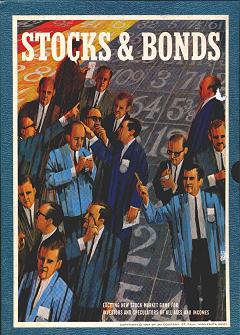Same Old Same Old
 Courtesy of Michael Panzner at Financial Armageddon
Courtesy of Michael Panzner at Financial Armageddon
Markets often send out false signals, though some seem to do it more than others. Indeed, one lesson we’ve learned during the past few years is how wrong equity markets can be in comparison to their fixed-income brethren. The best example, of course, was when stocks surged to new highs in the fall of 2007 while almost every part of the credit universe was convulsing or collapsing. Given what Reuters has to say in the following report, "Junk Bond Spreads Signal Slow Economic Recovery," and the euporia percolating through share prices lately, it seems to me that we are seeing the same old same old.
The sanguine view of stock investors about the U.S. economy is not borne out by the credit market, which is signaling that a recovery from the longest downturn in decades may be painfully slow.
Risks of continued high defaults and massive refinancing needs of the most precarious corporate borrowers are keeping credit spreads high, especially on high-yield bonds, signaling the economy is not out of the woods.
"We are still priced for near recession at the moment and certainly notably below average growth," said Christopher Garman, founder of Garman Research in Orinda, California. High-yield bond spreads are reflecting about a 9 percent default rate, "which would put economic growth around zero to 1 percent," he said.
Spreads would typically have to reflect a default rate more within the normal range of about 5 percent to signal an economy growing more than about 1.5 percent, Garman said.
Economists polled by Reuters last week said the economy is recovering more strongly than previously expected but next year will be lackluster and risks of a double-dip downturn remain. After shrinking by 1 percent in the second quarter on an annualized basis, U.S. gross domestic product will grow 2.4 percent in the current quarter, according to a poll of about 70 economists.
High unemployment and consumer debt will hamstring the economy after an initial rebound, however, respondents said, and they still see a 25 percent chance of a double-dip recession.
SPREADS PREFIGURED MEGA-DEFAULTS
Though not considered a traditional economic indicator, corporate bond spreads typically widen ahead of recessions and rising defaults as investors demand more yield for increased risk. Widening spreads also brake the economy as they make it more expensive for corporate borrowers to fund hirings and expansion.
Spreads on high-yield bonds roughly doubled in the six months before the recession that started in December 2007. As the credit crisis came to a head a year ago, spreads on many junk bonds and even some investment-grade bonds widened to "distressed" levels of more than 10 percentage points over Treasuries, prefiguring mega-defaults by Lehman Brothers, Washington Mutual, Tribune Co and others.
About 31 percent of high-yield bonds are still trading at distressed levels, down from a peak of about 87.5 percent in November but still high by historical standards, suggesting many companies remain vulnerable, Martin Fridson, chief executive of Fridson Investment Advisors in New York, said.
"The fact that you have as many as nearly one third of issues still at distressed levels would indicate it’s not a boom time coming soon," he said.
Government incentives for first-time home buyers and the cash for clunkers program for auto buyers are probably just borrowing growth from future quarters, so the 2.4 percent growth expected in the third quarter "is probably not a sustainable level for the next year," he said.
DEBT OVERHANG WORRIES RATERS
That was echoed in a report from Standard & Poor’s on Monday, which warned that though the worst of the recession is past, recovery will likely be slower than normal as default risk remains high for the weakest borrowers.
The ranks of firms with very low credit quality remains high, with 168 nonfinancial companies rated in the lowest grades, CCC-plus or below, compared with 67 at the end of 2007, S&P said.
Riskier companies also have heavy debt loads coming due over the next few years. Through 2014, nearly $700 billion of debt will mature from companies that have ratings of B-minus or below or debt trading at distressed levels, S&P said.
"Although the worst is likely behind us, it would be a mistake to infer that we are permanently out of the danger zone," S&P said.


